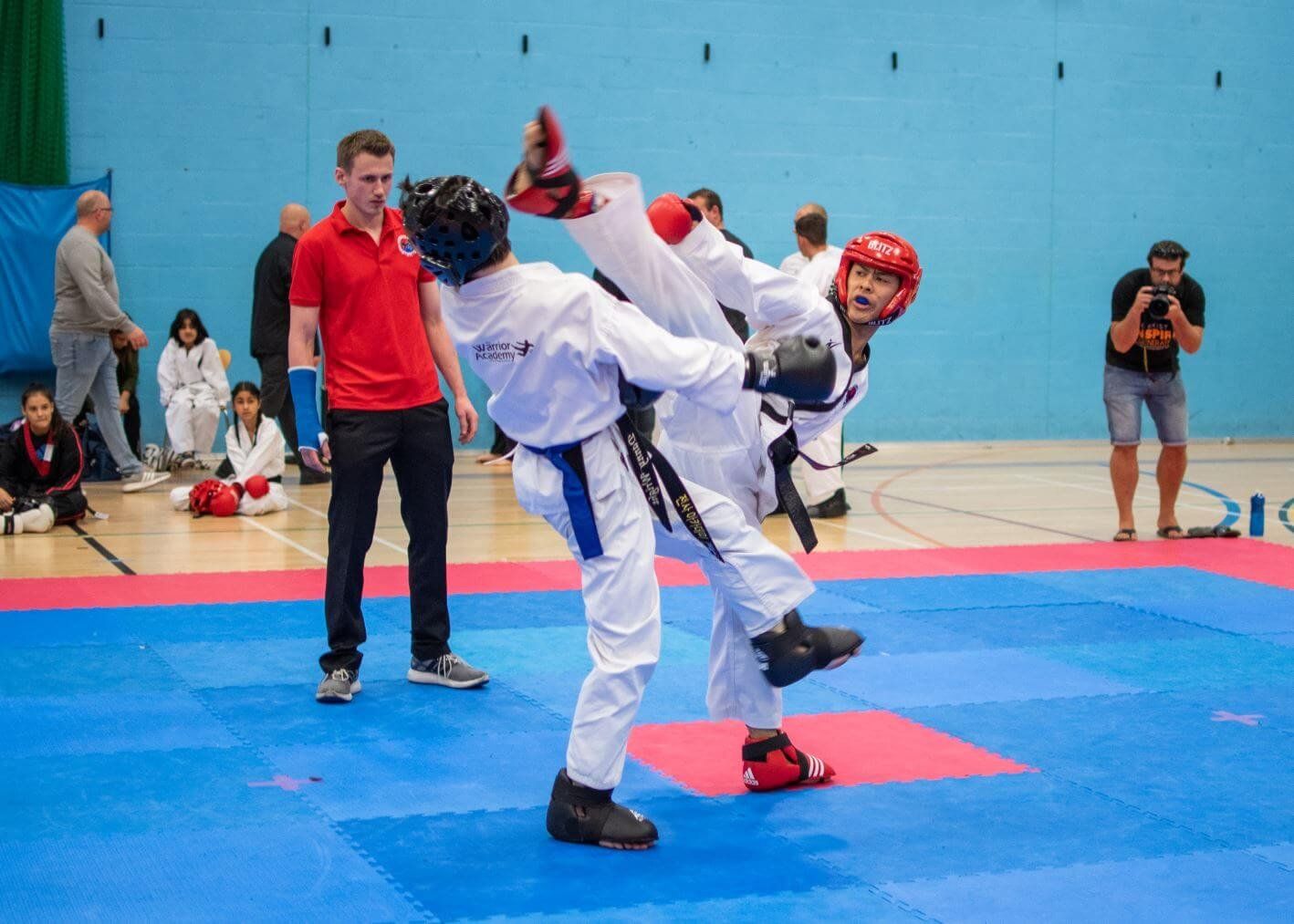Tournament Rules
Competitors Rules Brief applying to all GTI Tournaments
*NB. This ‘Competitors Brief’ contains information relevant to competitors and is abridged from the full competition rules contained in the ‘GTI Tournament Rules – Appendix B’ of the GTI Constitution
Click Click HERE to View/Download Rules in PDF
GTI Tournament Rules
Since its founding, the Global Taekwondo International has been regularly organising tournaments. Our tournaments are run on an invitational basis to the schools and associations who follow the ITF style. We conduct the sparring competition under strict 'light and semi contact' rules. We implement 'points away' penalties and disqualification for any excessive contact. We require a minimum of 9 kup (white belt with yellow stripe or tags) to enter our tournaments.
Below is a very brief summary of the divisions. Please use the link above for a move comprehensive guide.
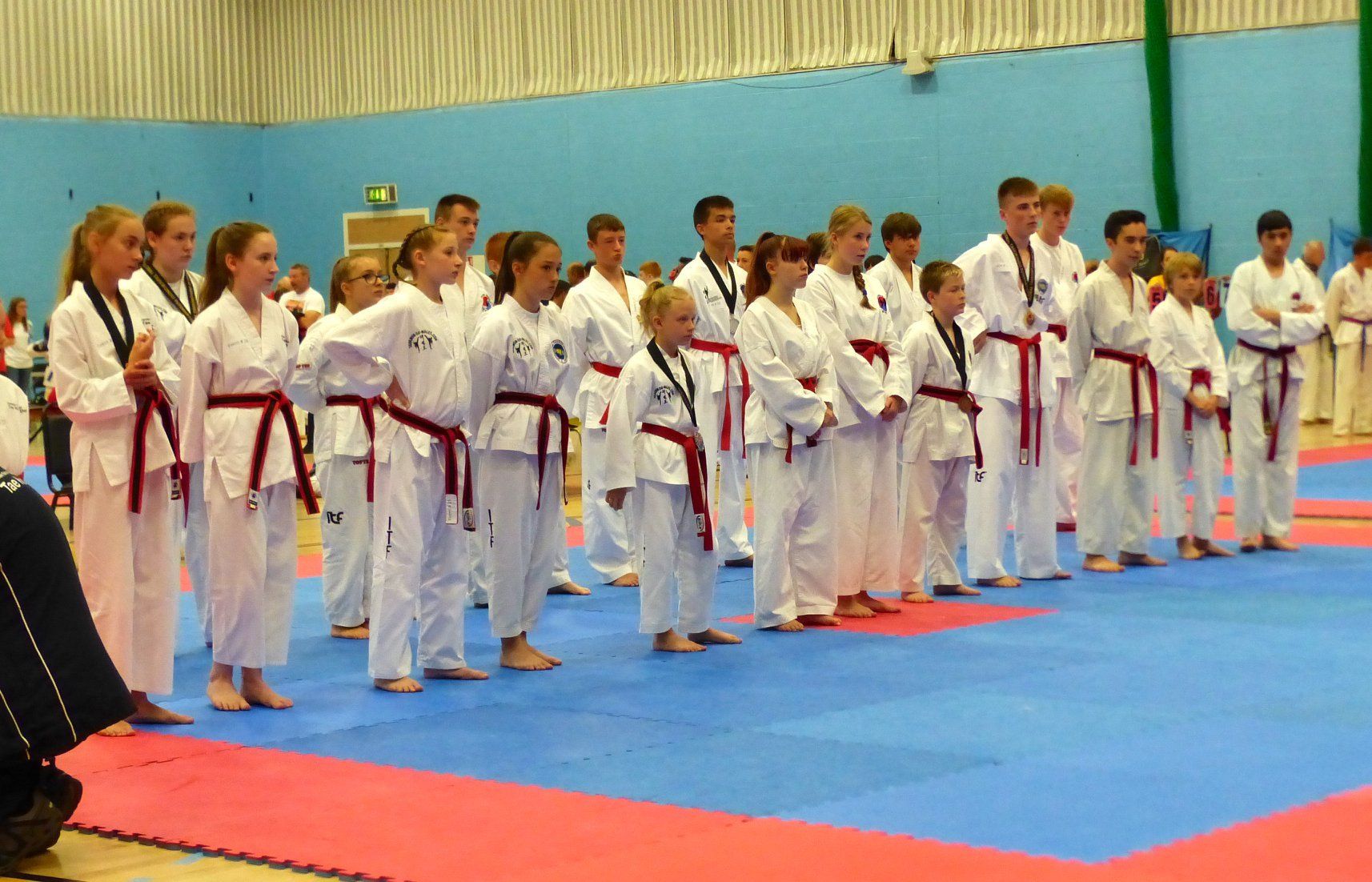
Belt divisions and weights
- 9th kup – white belt with yellow stripe or tags
- 8th kup – yellow belt
- 7th kup – yellow belt with green stripe or tags
- 6th kup – green belt
- 5th kup – green belt with blue stripe or tags
- 4th kup – blue belt
- 3rd kup – blue belt with red stripe or tags
- 2nd kup – red belt
- 1st kup – red belt with black stripe or tags
- 1st dan and above – black belt
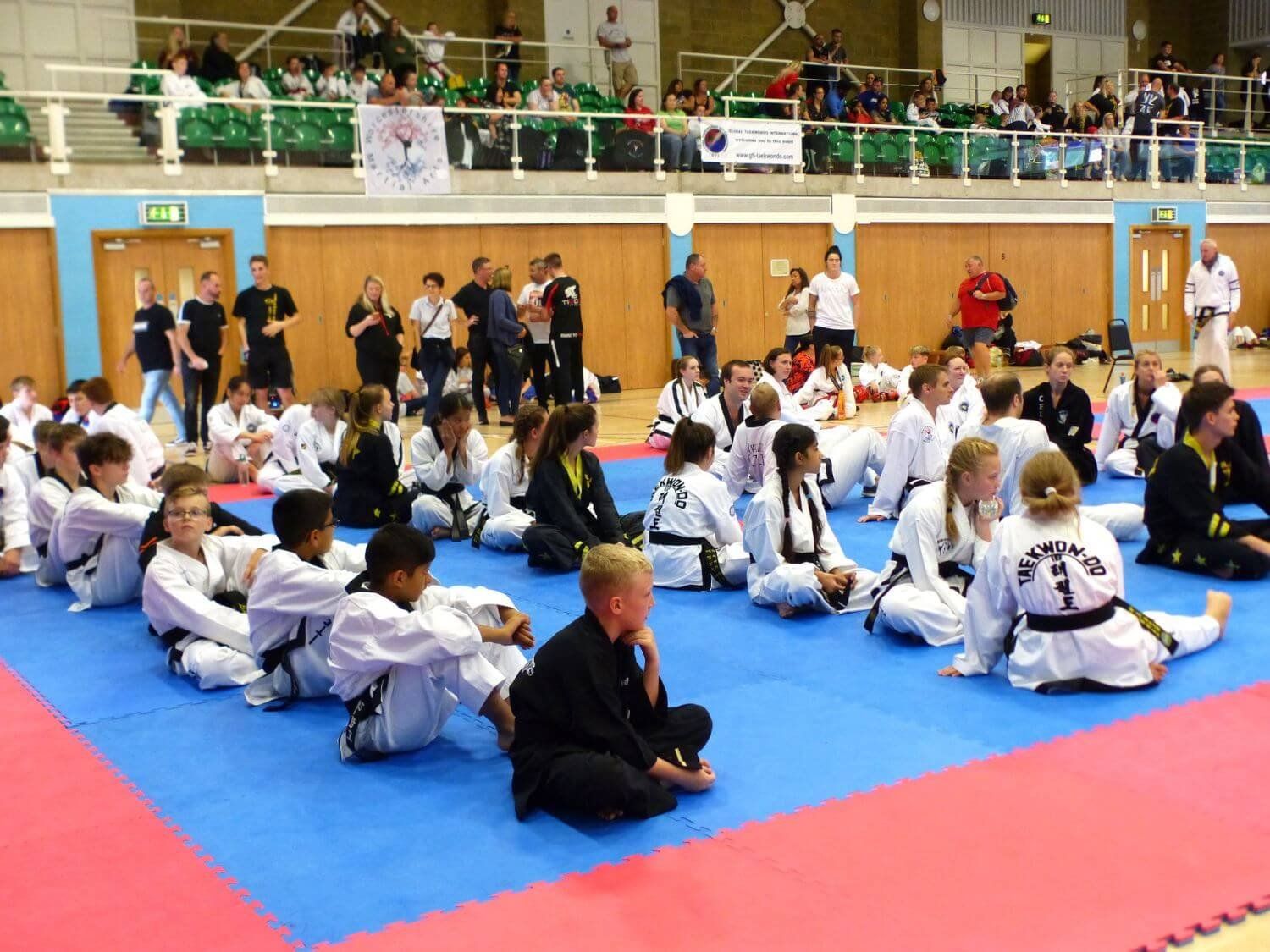
Divisions
The belt ranks fall into the following divisions with separate categories for men, women, boys, and girls. The Peewee category is an exception and can include mixed grades of boys and girls. The option of a veterans' (40yrs & over) category may also be available at particular events.
- Yellow – 9th to 7th kup
- Green – 6th and 5th kup
- Blue – 4th and 3rd kup
- Red – 2nd and 1st kup
- Black – all dan grades
Belt divisions may be merged depending on how many participants attend.
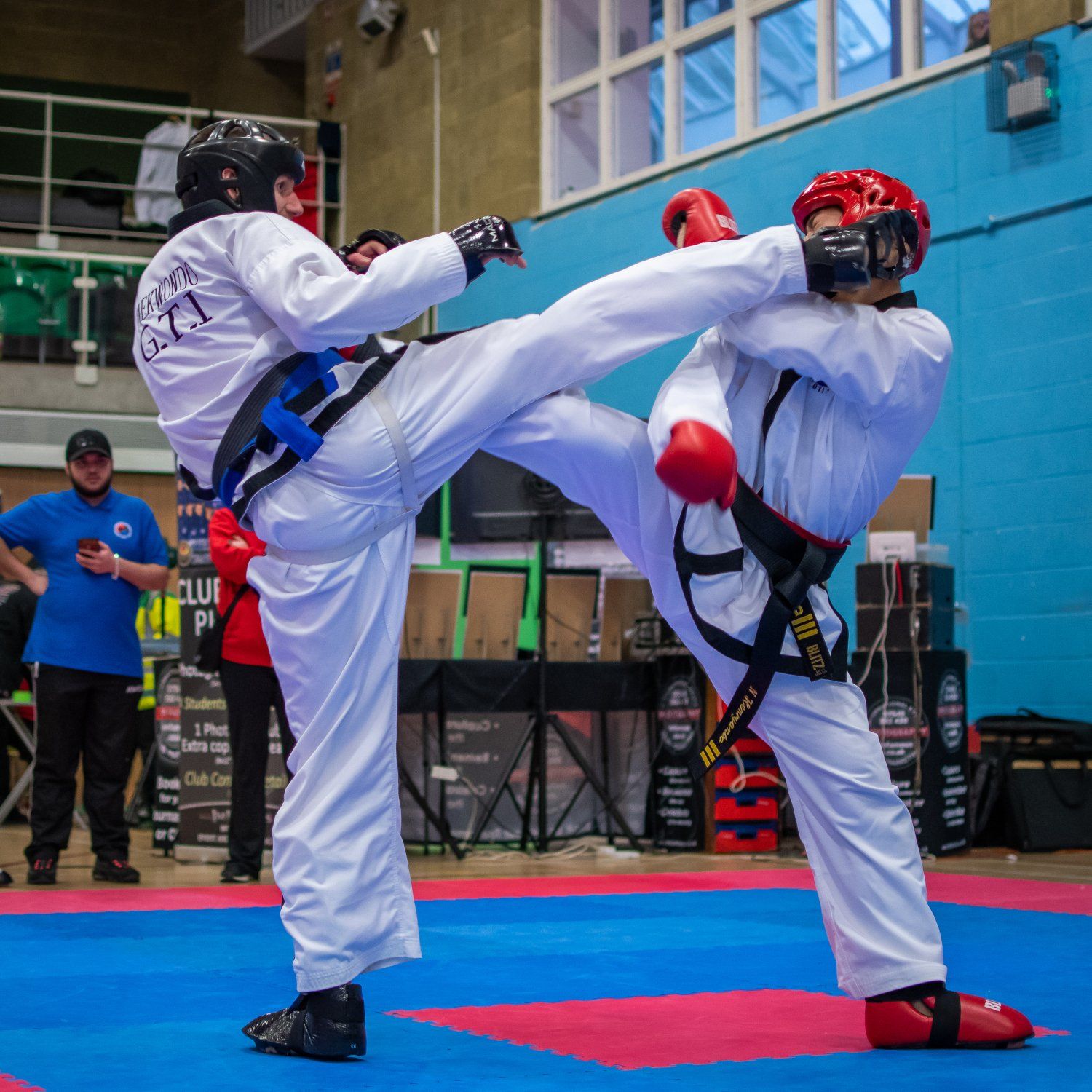
Adult male sparring weights
Weight divisions are specifically calibrated for the hundreds of competitors who are fighting on the day. A rough guide using traditional boundaries would include:
- Light weight - up to & incl. 67kg
- Middle weight - over 67kg up to & incl. 76kg
- Light-heavy weight - over 76kg up to & incl. 85kg
- Heavy weight - over 85kg
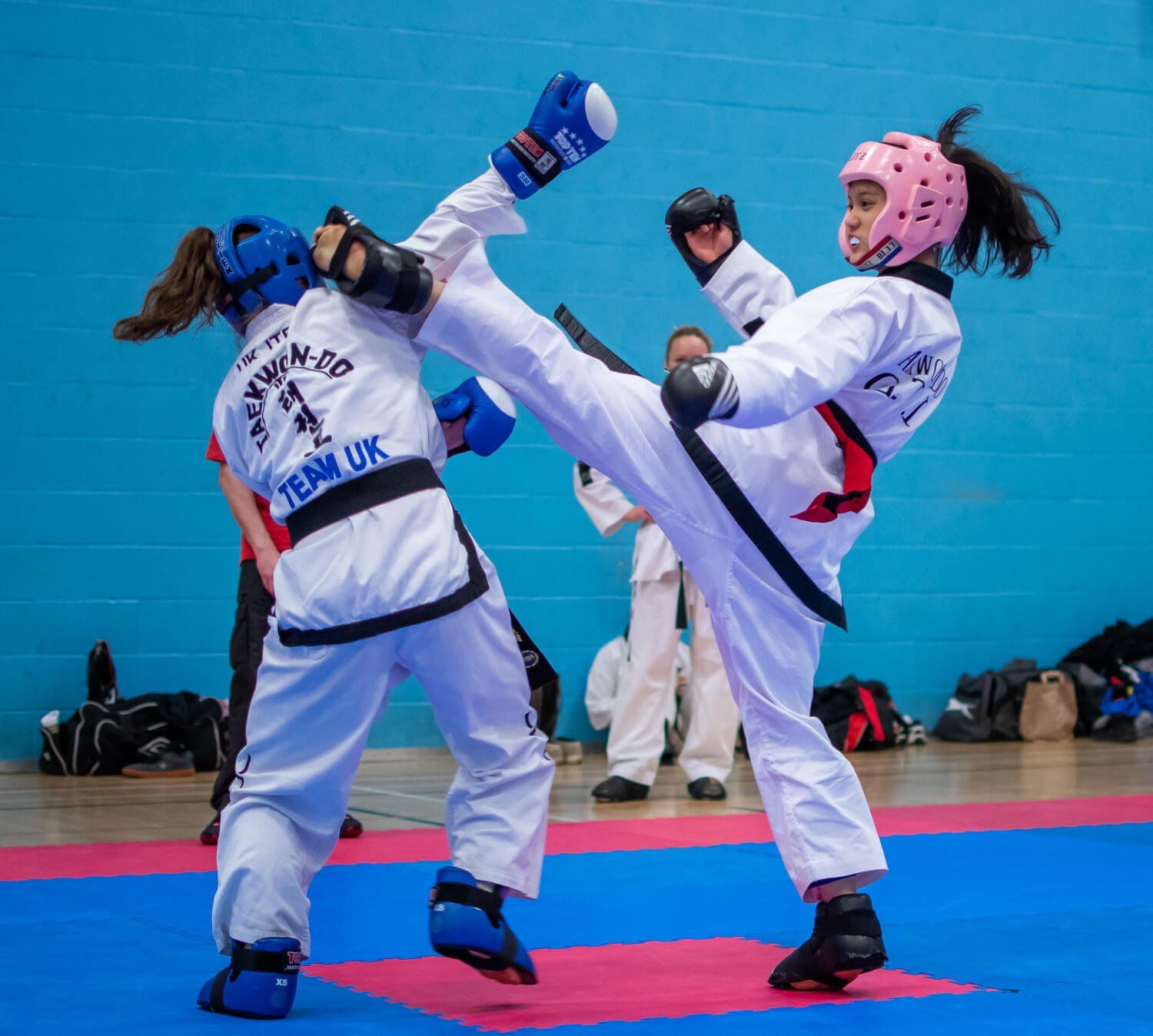
Adult female sparring weights
Weight divisions are specifically calibrated for the hundreds of competitors who are fighting on the day. A rough guide using traditional boundaries would include:
- Light weight - up to & incl. 60kg
- Middle weight - over 60kg up to & incl. 70kg
- Heavy weight - over 70kg
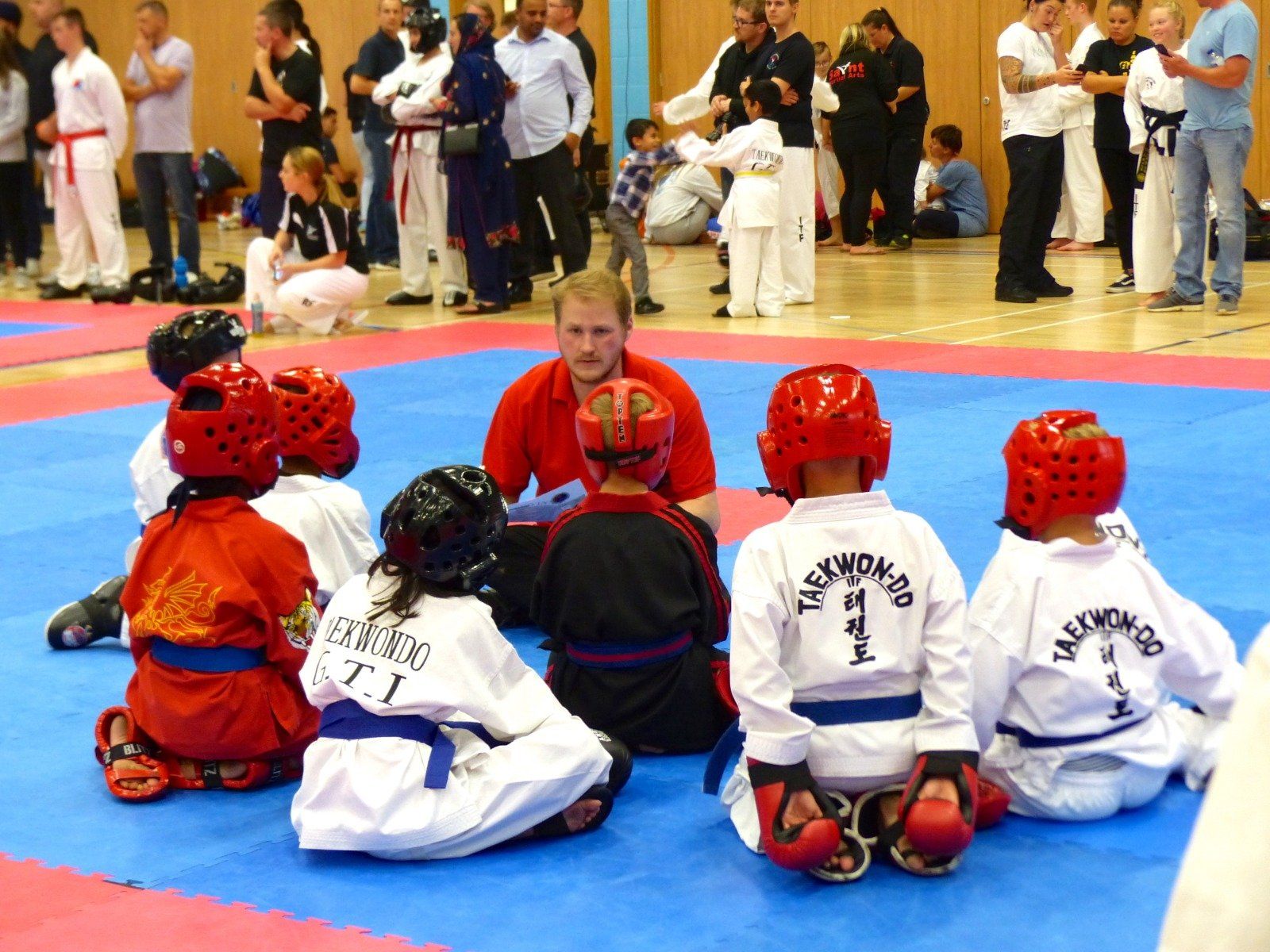
Junior sparring weights
NB. If any division has insufficient entrants to allow for a competitive bout, then at the Chief Umpires' discretion categories may be merged. Junior age ranges may also be amended for the same reason or if there is concern for the safety of junior competitors.
Junior Male & Female Sparring Weights 10 Years & under:
- Peewee* - up to & incl. 125cm
- Light weight - over 125cm up to & incl. 135cm
- Middle weight - over 135cm up to & incl. 145cm
- Heavy weight - over 145cm
Junior Male & Female Sparring Weights 11 to 13 Years:
- Light weight - up to & incl. 135cm
- Middle weight - over 135cm up to & incl. 145cm
- Light-heavy weight- over 145cm up to & incl. 155cm
- Heavy weight - over 155cm
Junior Male Sparring Weights 14 to 17 Years:
- Light weight - up to & incl. 60kg
- Middle weight - over 60kg up to & incl. 67kg
- Light-heavy weight- over 67kg up to & incl. 76kg
- Heavy weight - over 76kg
Junior Female Sparring Weights 14 to 17 Years:
- Light weight - up to & incl. 57kg
- Middle weight - over 57kg up to & incl. 67kg
- Heavy weight - over 67kg
*NB. Peewee division is mixed boys & girls if insufficient numbers do not allow for separate categories. Other junior weights have separate divisions for boys & girls.
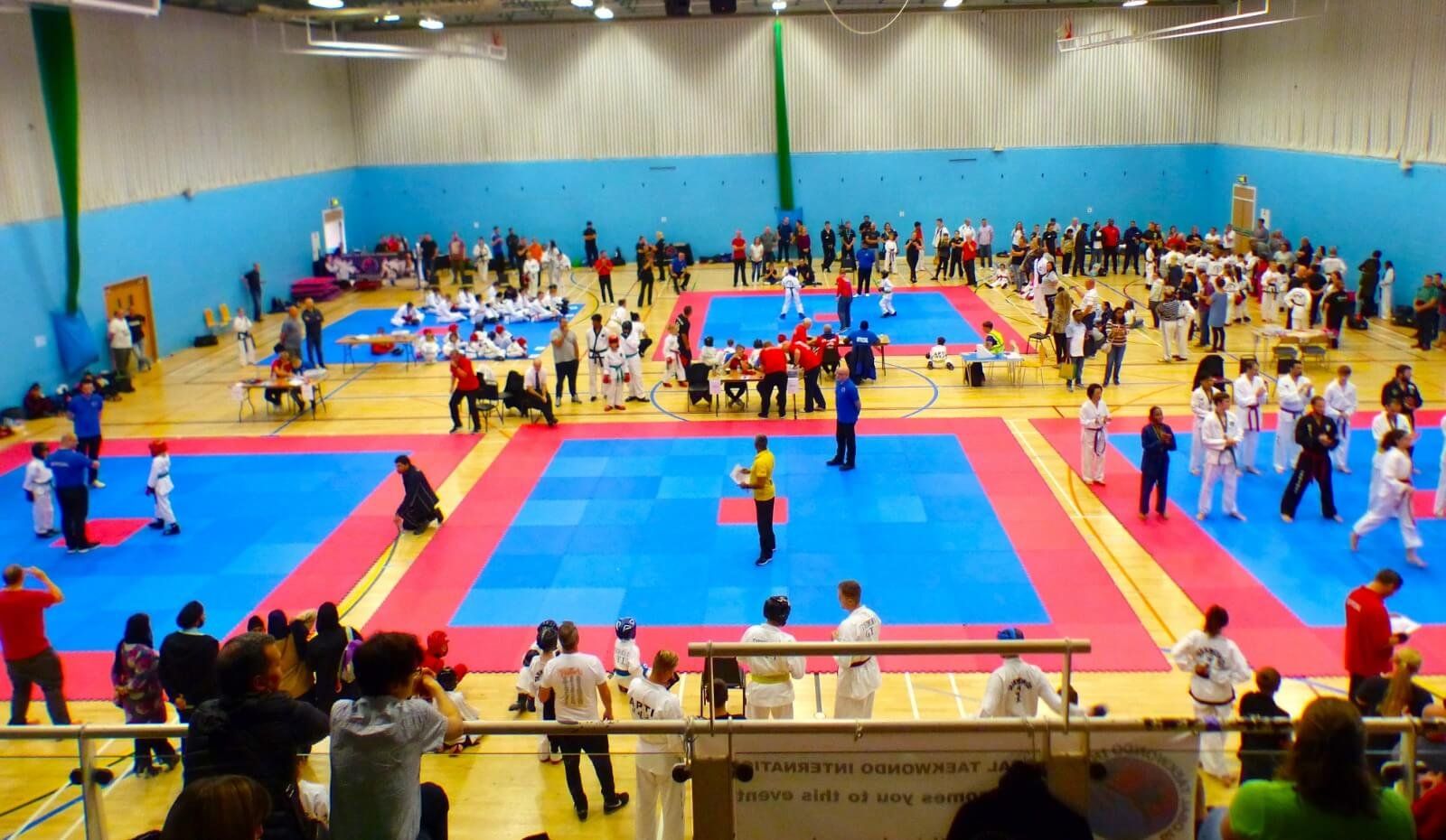
Sparring competition
- Yellow and green belt juniors: Point stop sparring
- Blue, red and black belt juniors: Continuous sparring
- All adult coloured and black belts: Continuous sparring
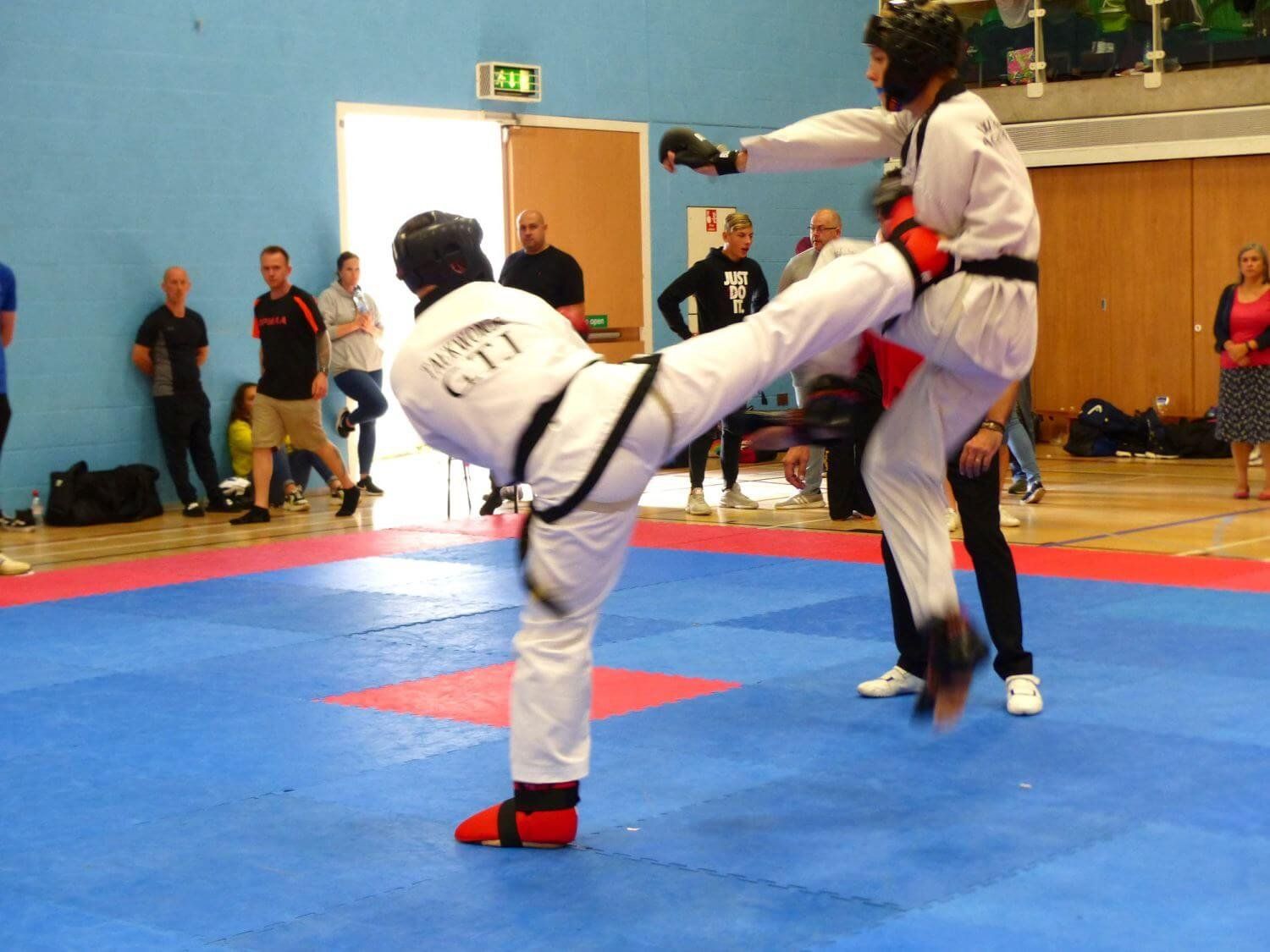
Duration of bouts
- Junior and adult coloured belt divisions: 1 1/2 minutes
- Junior and adult black belt divisions: 2 minutes
- Finals in black belt continuous sparring: 2 x 2 minutes with 1 minute break
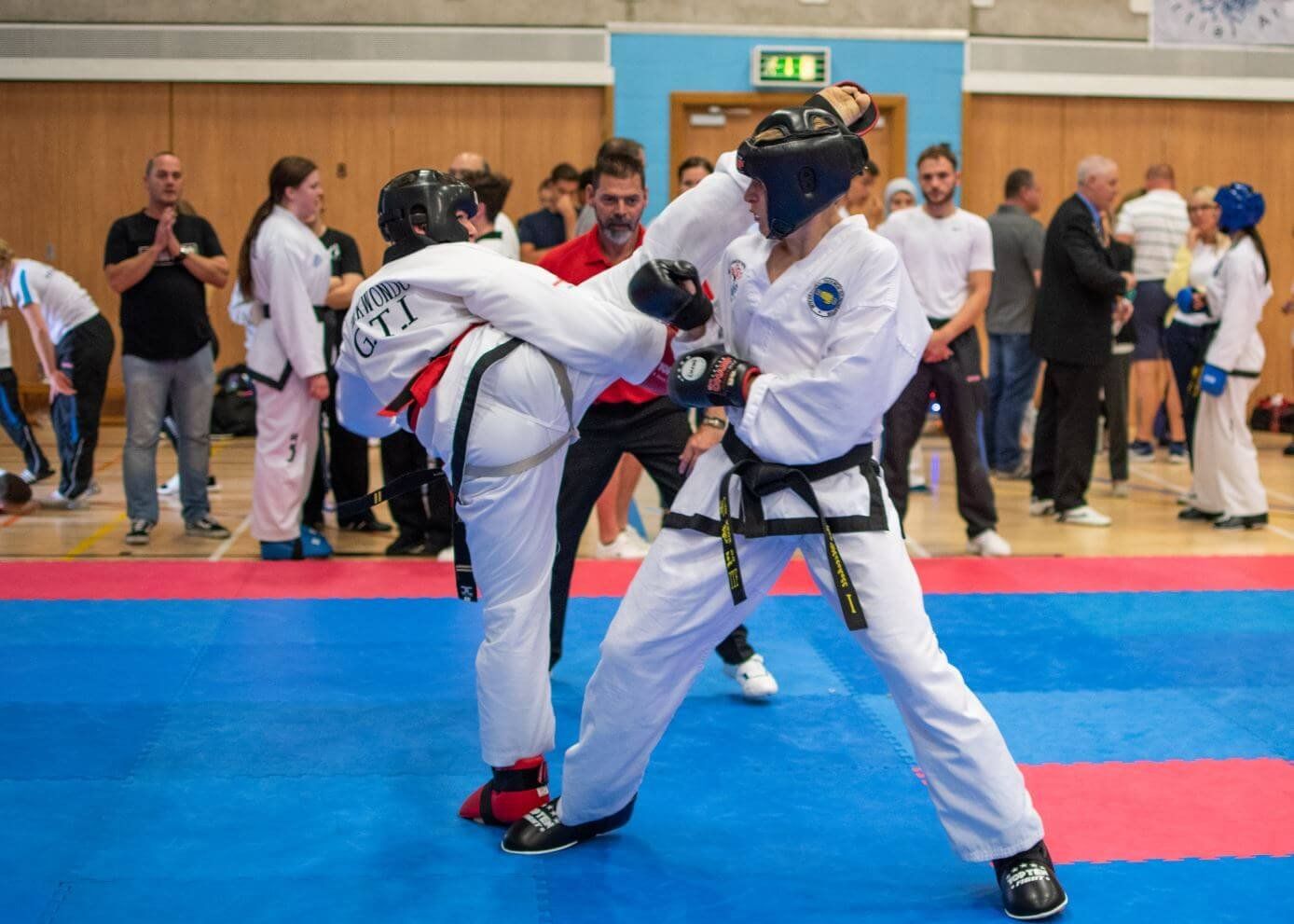
Scoring of points
- 1 point awarded for any hand technique to any target area
- 2 points awarded for foot technique to mid section area
- 3 points awarded for foot technique to high section area
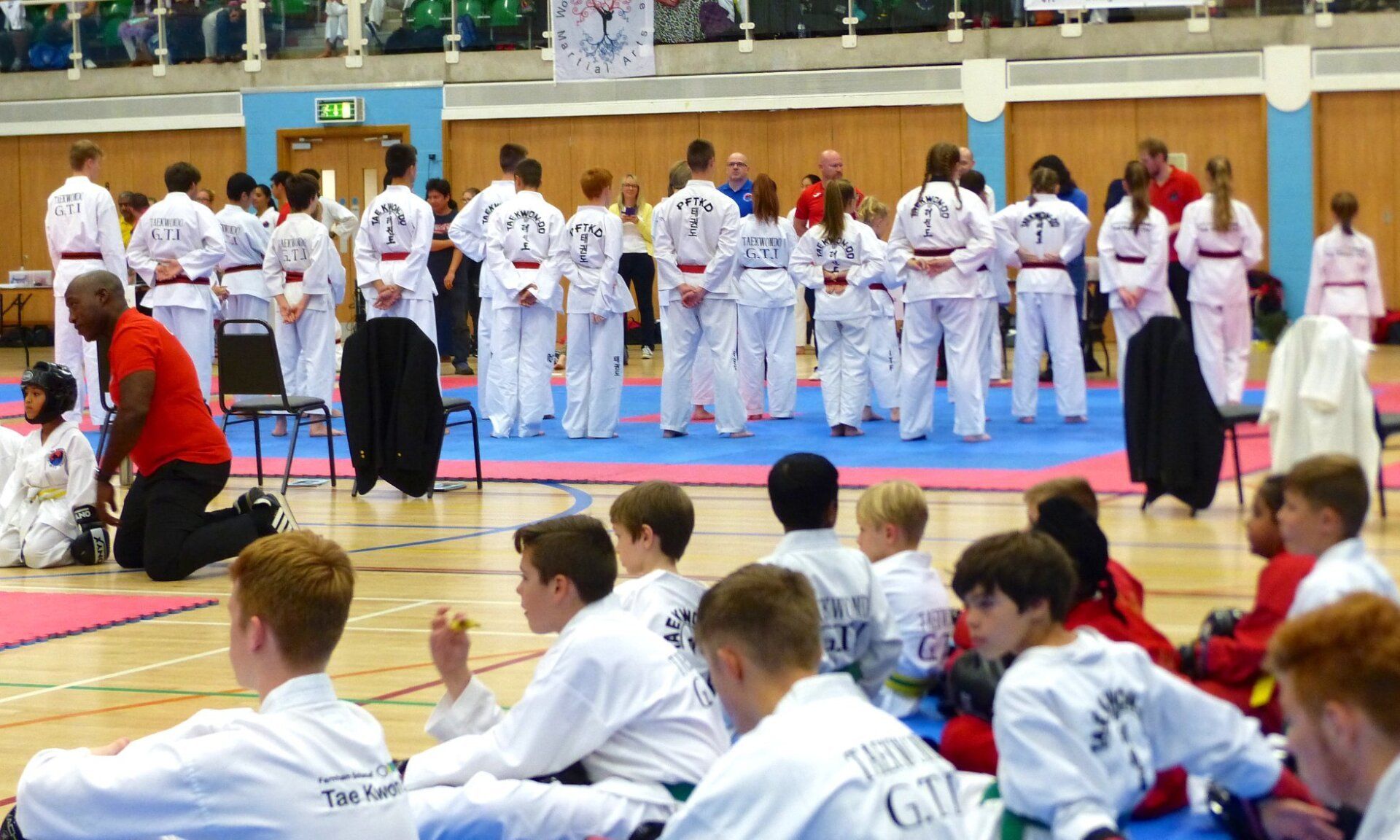
Target areas
- High: head and neck area complete
- Middle: trunk of the body from neck to lower abdomen vertically and from a line drawn from armpit vertically down to the waist on each side
- Middle: kidney area (only scoring area of back)
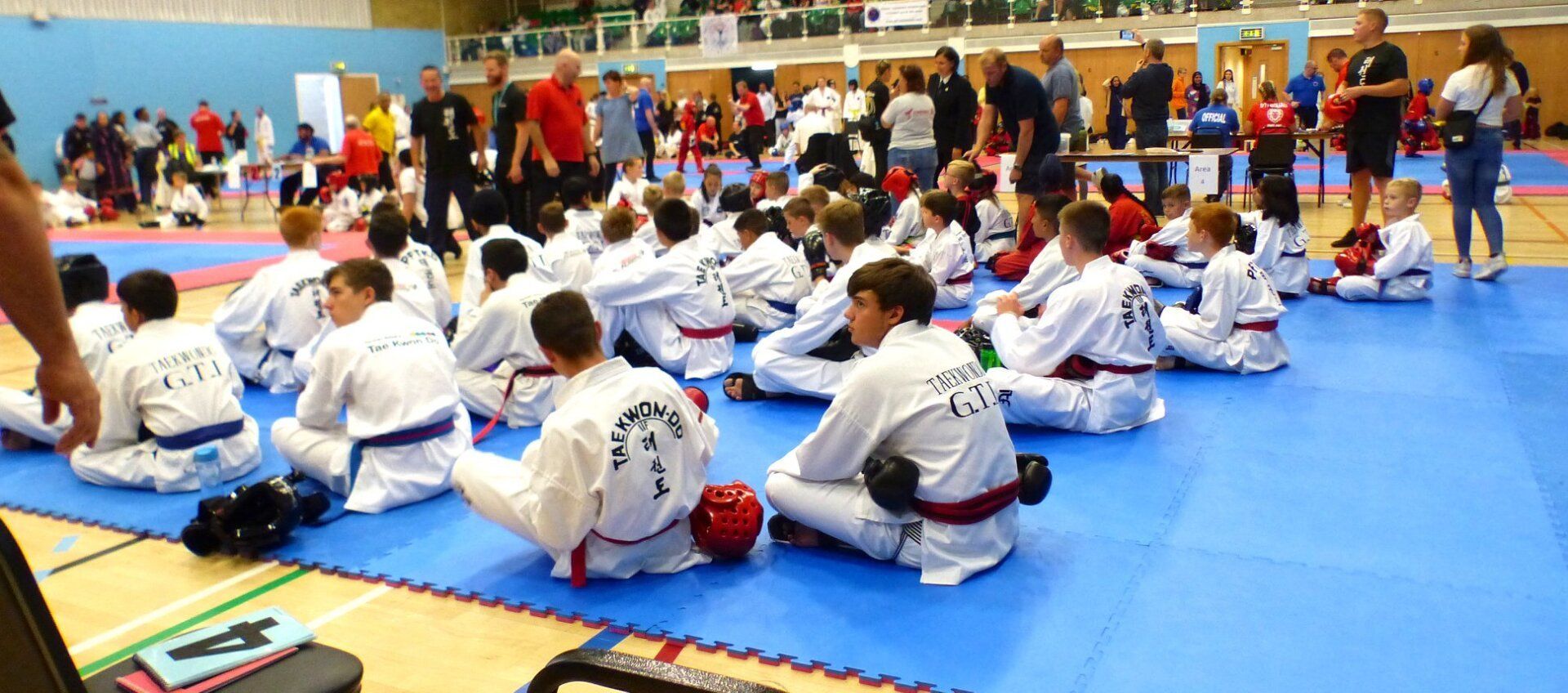
Demerit points and disqualifications
- Point stop sparring penalties: points will be deducted from the offender's score. If the offender has no points or insufficient points for penalty, then any outstanding points will be added to their opponent's score.
- Continuous sparring penalties: as points cannot be deducted from the handheld counters used by the umpires, the relevant points will be added to their opponent's score.
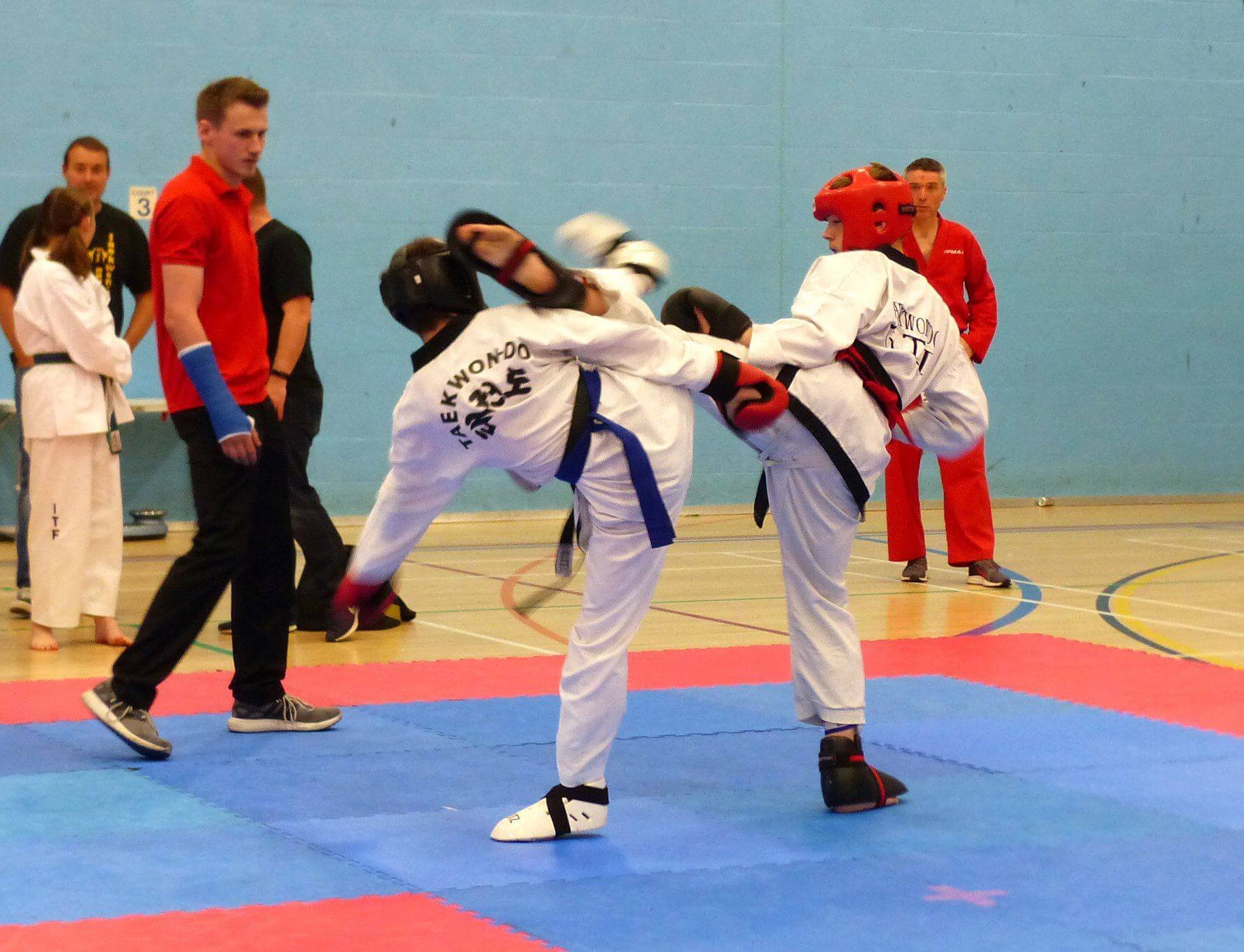
Penalties
- Stepping out of the area twice (i.e. on the 2nd, 4th, 6th and every other subsequent occasion). A competitor is considered to have “stepped out” when one foot fully crosses the perimeter line.
- Unintentional excessive contact on 2nd and all further occasions (i.e. after one warning by the referee).
- Loss of balance on each occasion (a competitor is considered to have lost balance when any part of the body other than the feet, come in contact with the floor).
- Grabbing any part of the opponent or their dobok after the referee’s warning.
- Tripping or leg sweeping the opponent on every occasion.
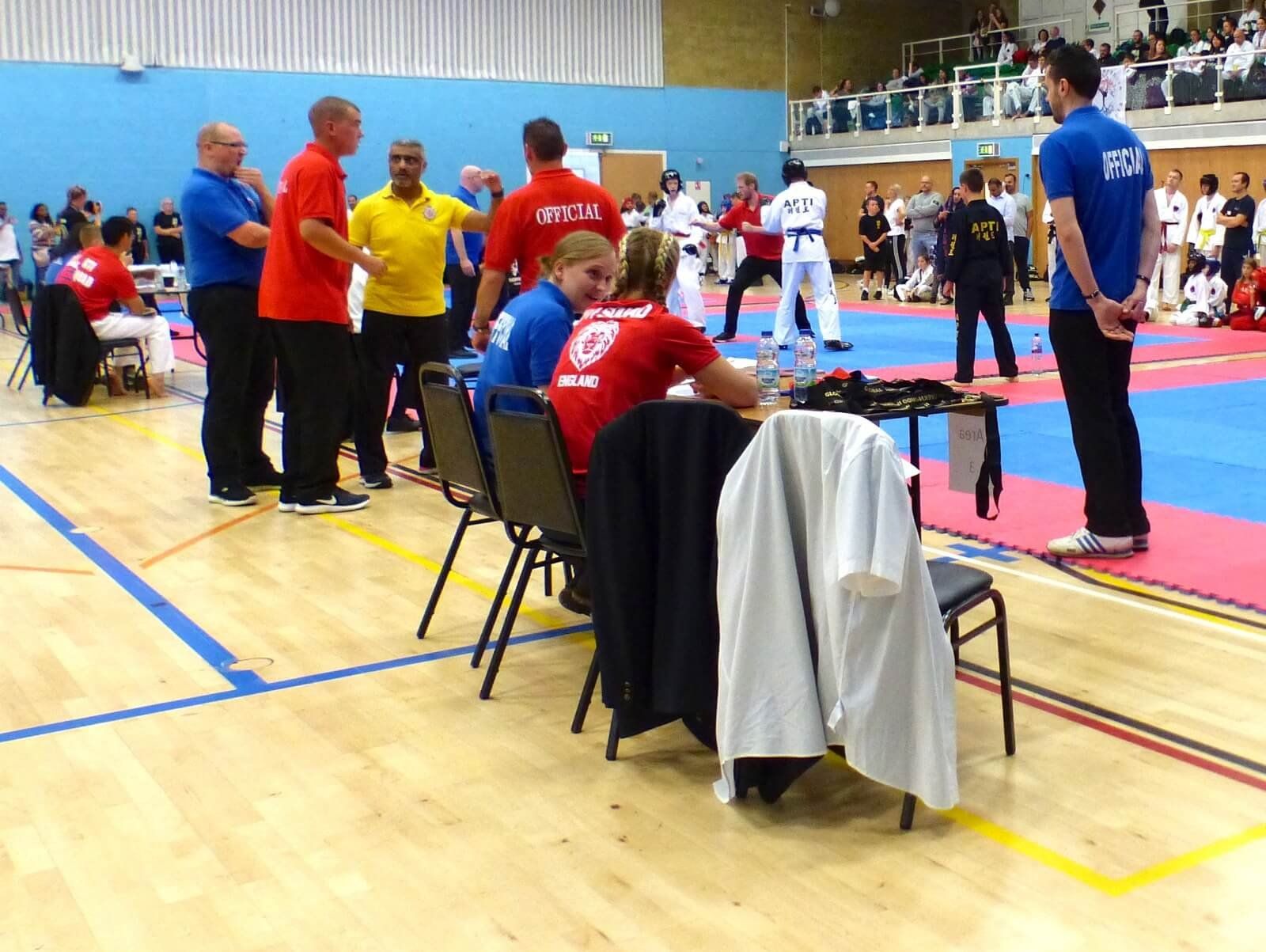
Discretionary points away or official warnings
- Unsportsmanlike behaviour
- Intentional lack of effort
- Excessive contact and aggression
- Illegal technique (e.g. low kicking, knee and elbow strikes, pushing)

Disqualifications will be awarded by the referee for the following:
- Intentional excessive contact or unnecessary aggression
- Repeated on “point away” offences
- Showing dishonour or disrespect to the officials, competitors or to the area
- Second occasion that an official warning (yellow card) is awarded
- Immediately on showing of the red card.
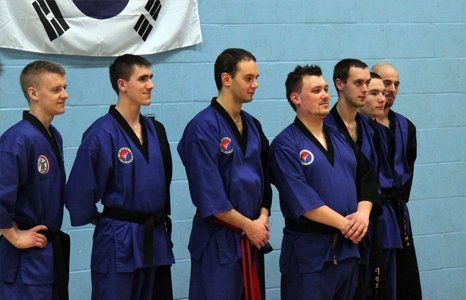
Accumulative disqualification
Contact and injury
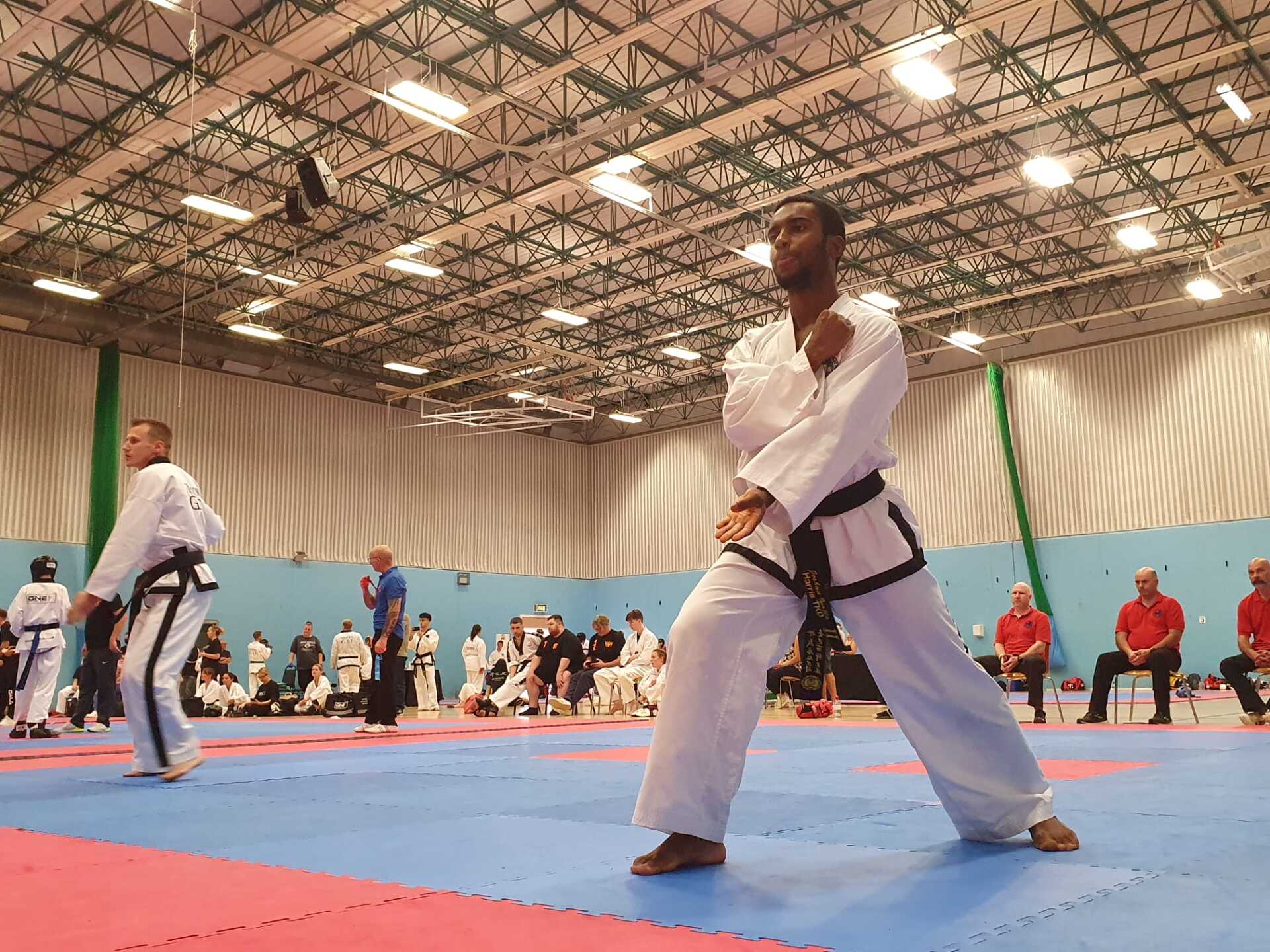
Pattern competition
The following patterns are the choices available to each division:
- Yellow – Chon-Ji, Dan-Gun, or Do-San
- Green – Do-San, Won-Hyo, or Yul-Gok
- Blue – Yul-Gok, Joong-Gun, or Toi-Gye
- Red – Toi-Gye, Hwa-Rang, or Choong-Moo
- Black – Choong-Moo or any dan grade pattern relevant to grade
Where sufficient entry number allow the belt divisions will be further subdivided using the following guidelines:
Coloured Belts
• 10yrs & under
• 11 to 13yrs
• 14 to 17yrs
• Adults (18-39yrs)
• Veterans (40yrs & over)
Black Belts
• 13yrs & under – 1st Dans
• 14 to 17yrs – 1st Dans
• 13yrs & under – 2nd & 3rd Dans
• 14 to 17yrs – 2nd & 3rd Dans
• Adults – 1st Dans
• Adults – 2nd & 3rd Dans
• Adults – 4th Dans & Above
• Veterans 40yrs & over – All Dan Grades
NB. A Veteran (40yrs & over) competitor may elect to compete in a non-veteran category but cannot compete in both veteran and non-veteran divisions.
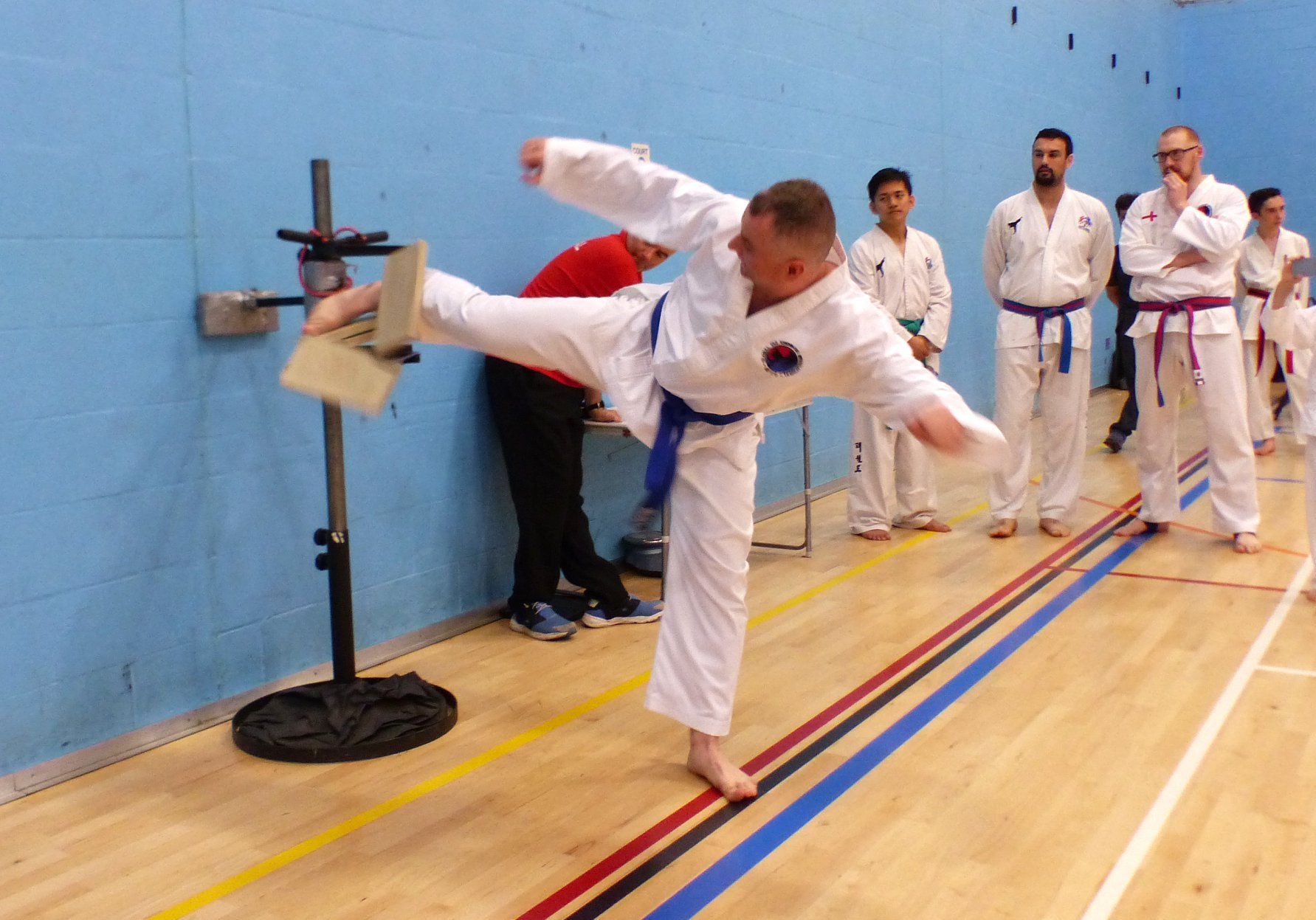
Destructive competition
- 1 white board
- palm heel strike
- Knife hand or reverse knife hand
- Left side kick - back leg
- Right side kick - back leg
- Reverse side kick/spinning back kick
- 1 black board
- palm heel strike
- Knife hand or reverse knife hand
- Jumping left side kick - from parallel ready stance
- Jumping right side kick - from parallel ready stance
- Jumping reverse side kick
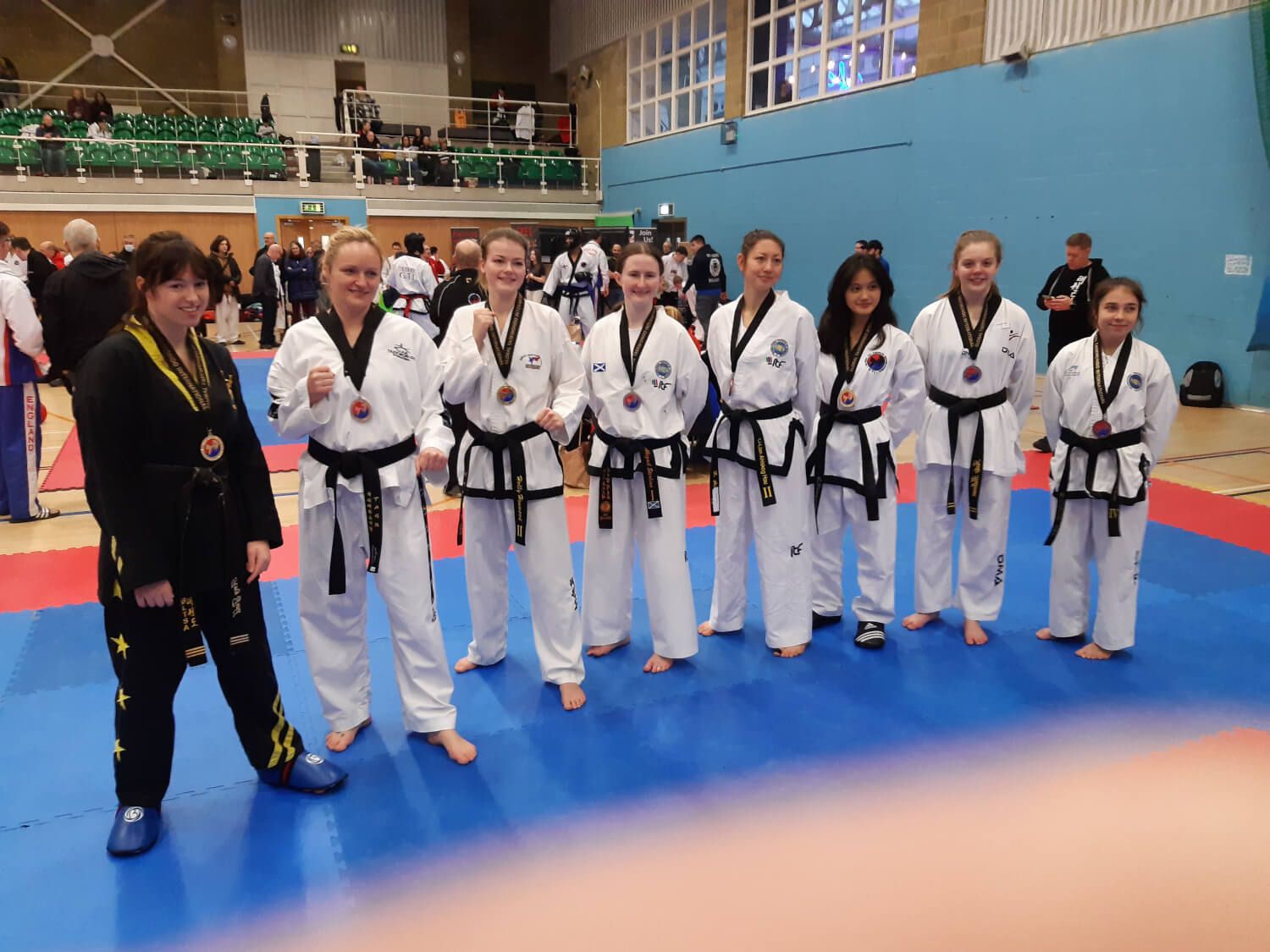
Bandages and strapping
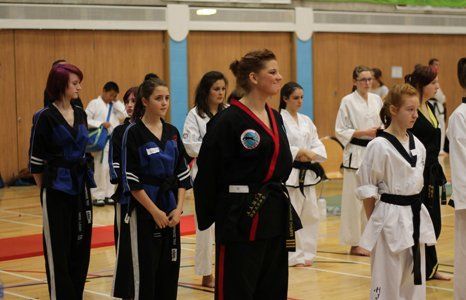
Jewellery
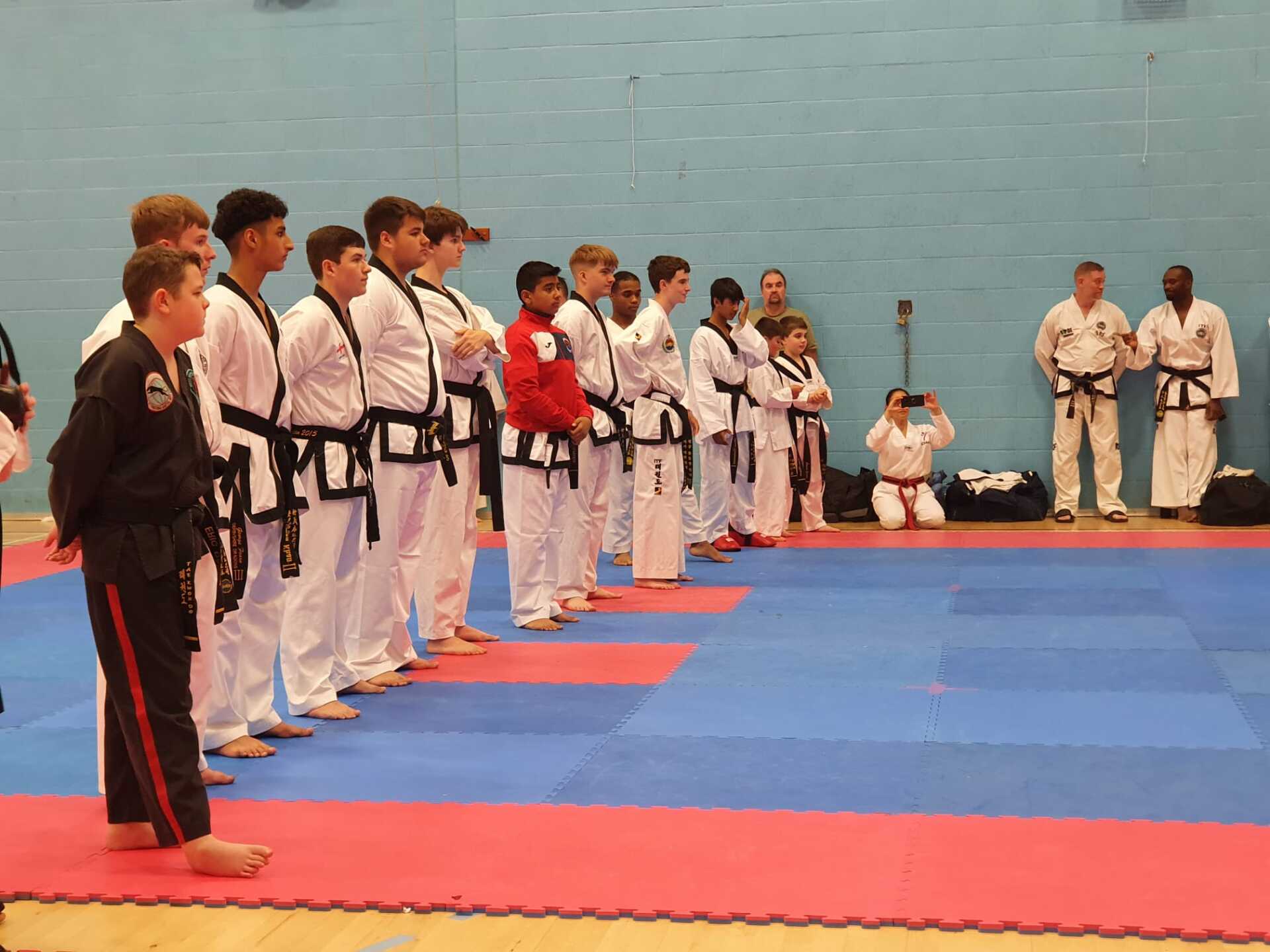
Uniforms and safety equipment
Global Taekwondo International members must wear their official white GTI uniform at the English and British championships. Other associations must wear a traditional or freestyle dobok with relevant ITF belt ranking as listed above.
T-shirts are not permitted.
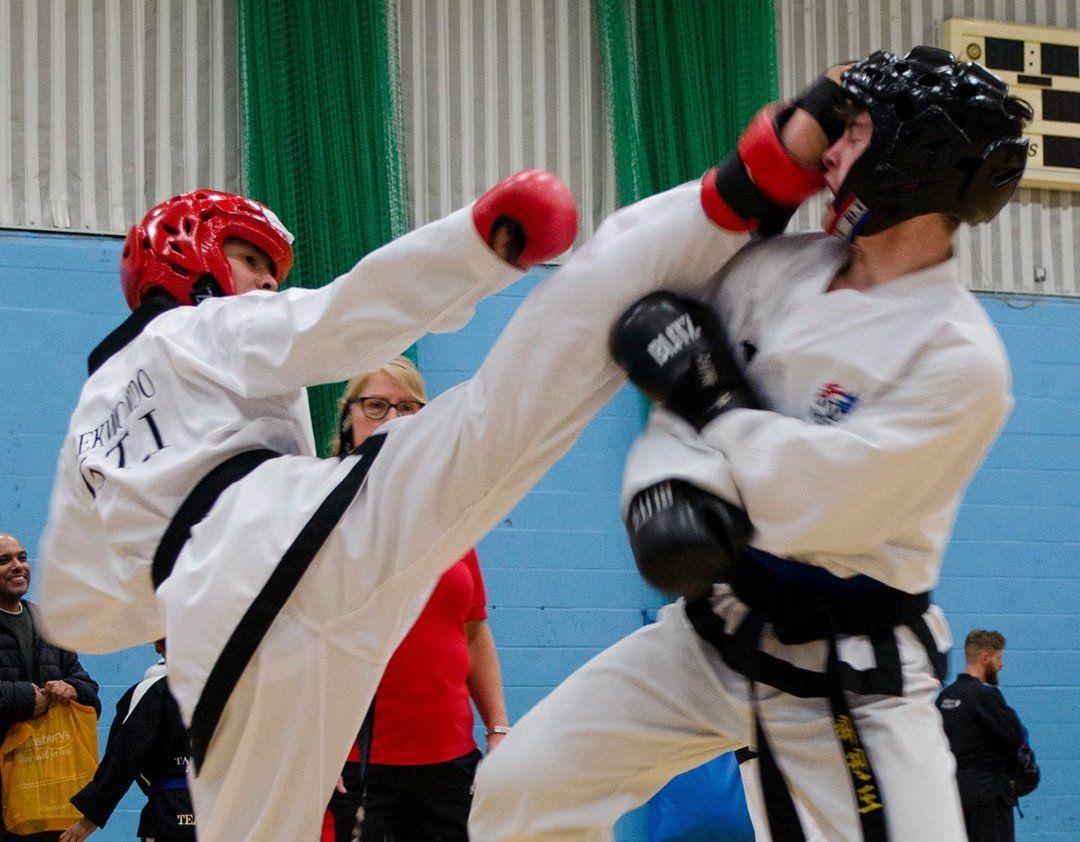
Safety equipment
All competitors must wear the following safety equipment:
- Groin guard protector of an approved type for men
- Hand and feet safety equipment of an approved type
- Shin protectors of an approved type
- Head guard
Optional equipment:
- Breast or groin protectors for women
- Gum shields
Please note: hand and foot protectors suitable for semi contact must be worn. Bag, grappling or boxing/ weighted/ laced gloves are not permitted. The foot protector must be a full boot type which only leaves the sole exposed, and must be of the correct size so that the toes do not protrude.

Official commands
- Charyot: attention
- Kyong ye: bow
- Chunbi: ready stance
- Si jak: start
- Hye chyo: break (sparring only)
- Barro: return to ready stance
Dispute procedure
- Tournaments chief umpire:
all organisers will appoint a person to act as the chief umpire. This person must be present in the arena throughout the whole of the tournament. Generally this person will be the most experienced official at the event
- All competitors must nominate on their competition entry from a delegate to act on their behalf in the event of any disputes. This person would normally be their club instructor, but can be any black belt that is fully conversant with the GTI tournament rules.
- All competitors who wish to dispute a decision must go through their delegate direct to the chief umpire. Neither the competitor, nor any person other than the delegate, is allowed to approach the chief umpire direct.
- In order to give a decision on any dispute, the chief umpire may call officials, competitors or delegates, as he/ she so desires in order to give evidence or opinions on the dispute.
- On reaching a decision, the chief umpire will notify all parties concerned, and this decision will be binding and cannot be appealed against.
- A copy of the full GTI Tournament rules as laid down in appendix B of the constitution must be present at all tournaments and must be accessible to all competitors and officials.
- The tournament chief umpire must base all their dispute decisions on the rules as laid down in this document, and in no case can their final decision conflict with these rules.
- Delegates, competitors or team captains who persist in arguing against a decision made by the chief umpire, may at his/ her discretion, have their whole team or club disqualified from further events at the tournament.
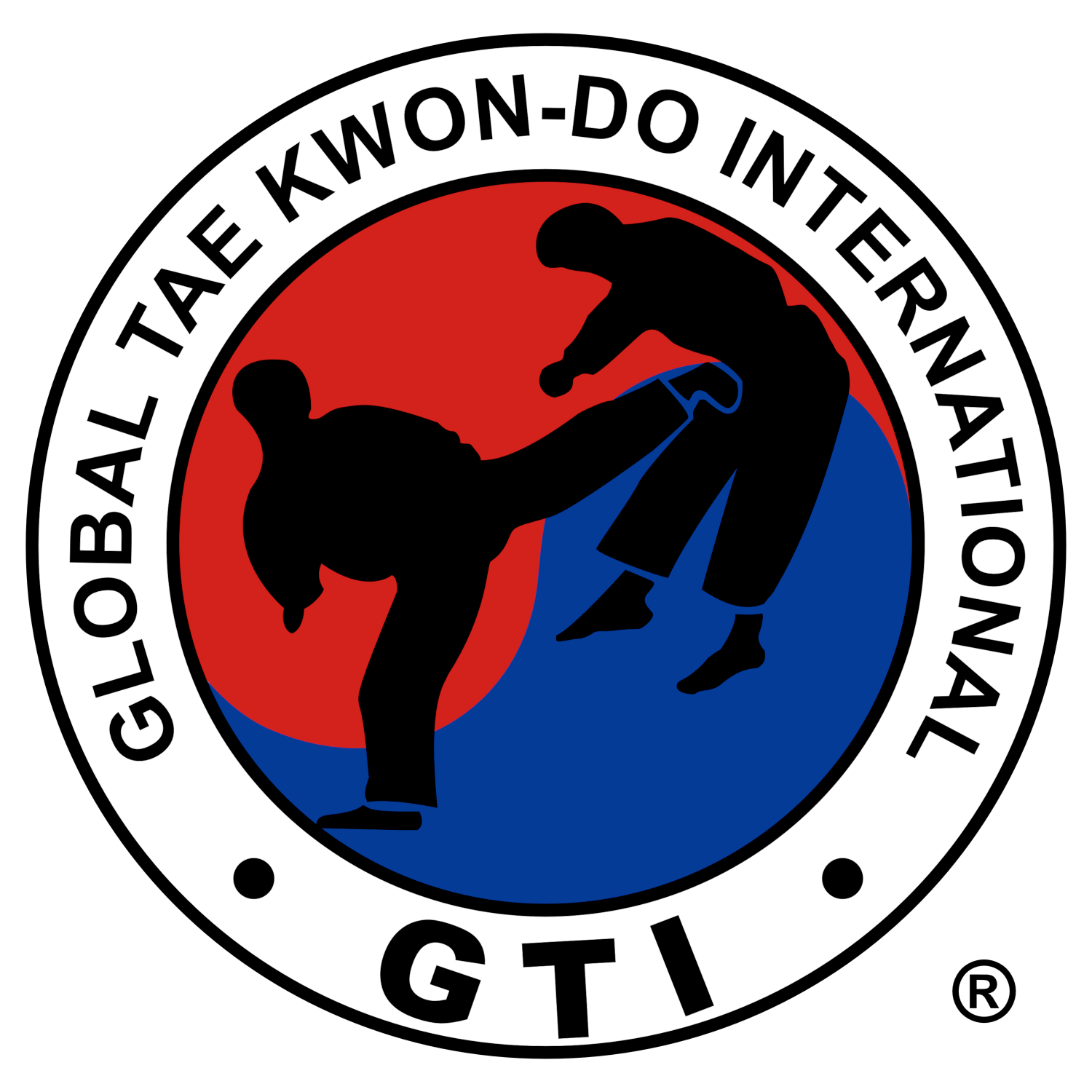
contact Global Taekwondo International
